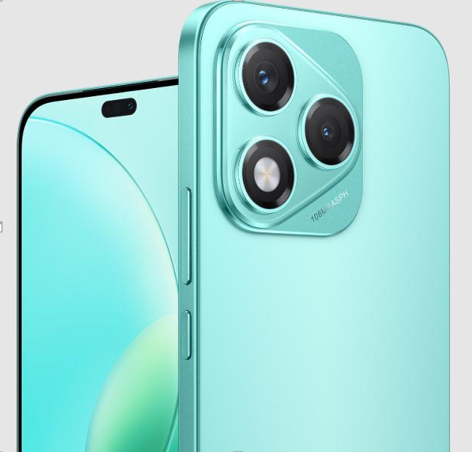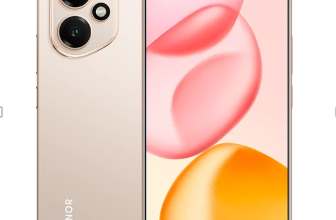What Makes a Smartphone Camera Truly High Quality?

A high-quality smartphone camera does more than capture sharp images. It balances hardware, software, and user experience to create photos and videos that feel professional while staying easy to use. From the size of the sensor to the power of the software, each detail shapes the final result. In today’s digital lifestyle, the smartphone camera is often the most-used camera a person owns, so expectations run high. Devices such as the HONOR 400 Lite highlight how advanced features—like a 108MP sensor and AI-powered tools—bring clarity, creativity, and convenience together, setting new benchmarks for what defines camera excellence.
Hardware Foundations of Camera Quality
The Importance of Sensor Resolution
Resolution plays a central role in smartphone photography. A higher megapixel count allows more detail, sharper enlargements, and flexibility in cropping without losing clarity. Modern devices like the HONOR 400 Lite showcase this with its 108MP main camera, delivering lifelike details that rival dedicated cameras. A strong resolution also helps in capturing subtle textures, whether it’s street portraits, landscapes, or product shots. However, resolution works best when paired with intelligent pixel technology, ensuring performance across lighting conditions.
Aperture and Light Sensitivity
A camera’s aperture controls how much light enters the lens, directly influencing image quality. Wider apertures improve low-light performance and create natural background blur for portraits. The HONOR 400 Lite smartphone employs an f/1.75 aperture on its main lens, enabling bright, vivid images even at night or indoors. A capable aperture ensures that users don’t rely on artificial lighting or editing, making every shot closer to reality. Strong aperture design is a critical marker of high-quality cameras.
Sensor Size and Pixel Combination
Beyond megapixels, sensor size determines how effectively a camera captures light. Larger sensors gather more information, reducing noise and enhancing color depth. Advanced designs, like the HONOR 400 Lite’s 1/1.67-inch ultra-large frame, combine pixels in a 9-in-1 structure for improved clarity. This approach creates larger effective pixels, enhancing night photography and improving overall consistency. A balanced sensor design ensures high-quality results that hold up under diverse shooting conditions.
See also: Different Metal Bending Techniques in Manufacturing
Software and AI Enhancements
Intelligent Image Processing
Hardware sets the stage, but software refines the performance. High-quality smartphone cameras rely on algorithms to adjust exposure, sharpen details, and balance colors automatically. The HONOR 400 Lite uses AI processing that adapts to different scenes, optimizing settings for portraits, landscapes, or motion. This makes it possible for everyday users to take professional-looking shots with minimal effort. Intelligent processing ensures each photo looks polished and visually appealing.
The Role of AI Assistance
Artificial intelligence elevates smartphone photography by offering real-time support. Scene recognition, subject tracking, and automatic adjustments help users focus on creativity rather than manual controls. The HONOR 400 Lite introduces an AI Camera Button that goes beyond standard photography, offering instant visual intelligence to identify objects or deliver answers. This integration shows how high-quality smartphone cameras combine practicality with innovation, expanding the camera’s purpose beyond traditional use.
Zoom and Stabilization Features
Zoom capabilities and stability determine how versatile a camera feels. A truly high-quality smartphone camera delivers lossless zoom without sacrificing detail. The HONOR 400 Lite features 3x lossless zoom, letting users capture distant subjects with precision. Coupled with advanced stabilization techniques, it ensures video recording remains smooth and photography stays sharp. Features like these empower users to capture events, travel, or daily life in ways that feel seamless and cinematic.
User Experience and Creative Control
Portrait and Lifestyle Photography
Portrait performance is often the test of a high-quality camera. Effective background separation, skin tone accuracy, and fine detail reproduction define how natural images appear. The HONOR 400 Lite emphasizes street-style portrait photography, capturing expressive images with depth and style. For many, this makes the device feel like a professional tool for documenting daily life, proving how camera quality enhances creative storytelling.

Front Camera and Selfie Experience
The selfie camera is equally important in defining quality. High-resolution front cameras support video calls, content creation, and self-expression. The HONOR 400 Lite delivers this with its 16MP front lens and selfie light, ensuring clarity even in dim environments. A high-quality smartphone camera should not neglect the user-facing side, offering the same polish and consistency as the main sensor. Balanced performance across both cameras ensures a complete experience.
Design, Comfort, and Everyday Use
True quality also comes from how comfortably a device integrates into daily routines. The HONOR 400 Lite’s lightweight 171g body and slim 7.29mm thickness make it easy to carry and use for long photography sessions. A device that feels natural in the hand encourages users to explore their creativity without fatigue. Design, materials, and ergonomics combine with camera technology to ensure the smartphone remains a practical, enjoyable tool for everyday use.
Conclusion
A smartphone camera achieves true quality by blending powerful hardware, intelligent software, and user-focused design. Resolution, aperture, and sensor size create the technical foundation, while AI-driven processing and features like lossless zoom refine the output. User experience completes the equation, ensuring that photography feels natural, consistent, and inspiring. Devices such as the HONOR 400 Lite highlight how modern smartphones deliver this balance with high-resolution sensors, AI tools, and thoughtful design. As smartphone cameras continue to evolve, they set new standards for how people capture, share, and understand the world through images.





